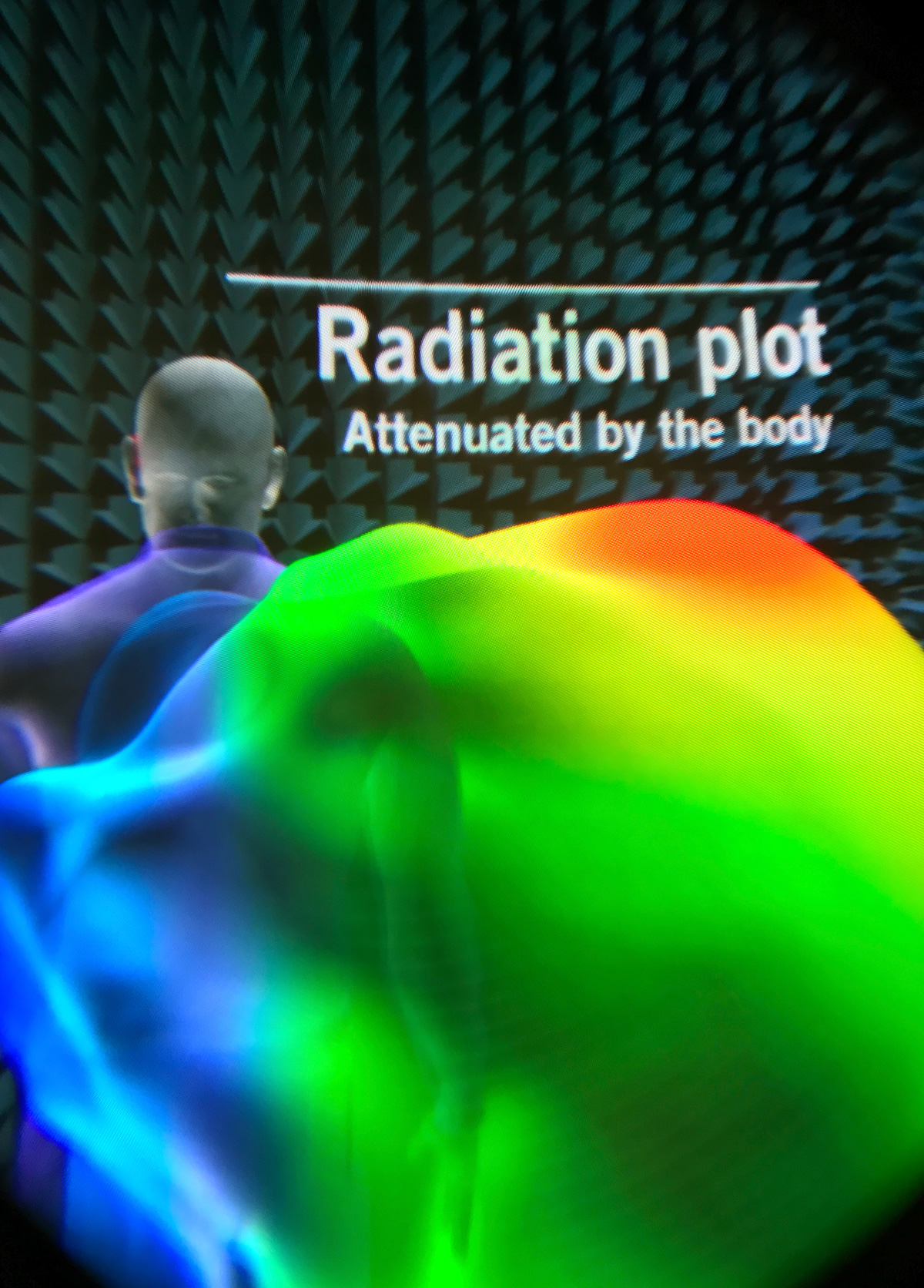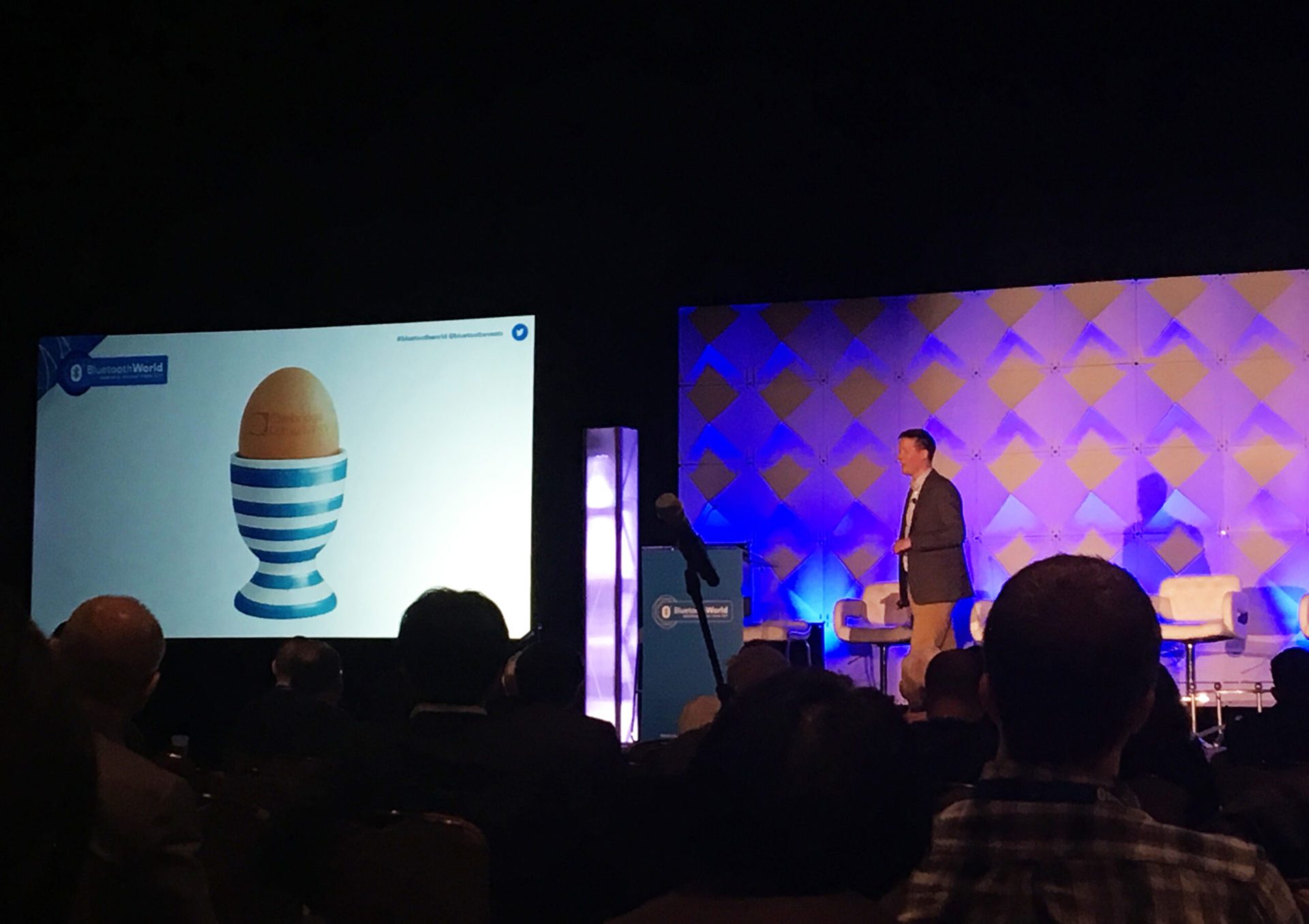In late March, Synapse attended Bluetooth World in San Jose, CA. The event was split between an exhibition hall, presentations by executives and industry thought leaders, as well as developer sessions. The exhibition hall was filled with chip vendors, tool vendors, and a showcase of startups making use of Bluetooth. Synapse had a joint both at the show with our colleagues from Cambridge Consultants, where we showed off CC’s ‘Stargate 64’ anechoic radio test facility in a VR video, their work on Pizzacato, the first all-digital radio transmitter, and Synapse’s end-to-end product development capabilities with a showcase of the San Francisco 49ers custom ticketing entry system. The presentations and developer sessions focused on pushing the boundaries of Bluetooth Low Energy (BLE) technology and looking forward to the next generation of products that take advantage of Bluetooth 5 and beyond.

Talks around the current generation of BLE generally focused on how to make more natural experiences for consumers. For example, Scott Jenson from Google presented on the Physical Web, and discussed the desire to break the paradigm of one custom app per Bluetooth device. Google’s vision is to “walk up and use anything,” and Scott presented example experiences such as approaching a parking meter and being immediately prompted for a web portal for payment at that location. He also discussed the common scenario of taking a ticket at a deli and being notified when your number was up.
Another highlight from the talks was a panel on smarter beacon usage that featured speakers from the Sacramento Kings Golden 1 Center and the San Diego Museum of Art, among others. During the Q&A, the speakers discussed making use of beacons to unlock new experiences beyond static advertising and marketing. In the case of the Kings arena, they are making use of the technology to invite certain season ticket holders to “meet-and-greets” or other VIP experiences based on their personal profiles. Meanwhile, the San Diego Museum of Art is using beacons to augment visits to the museum by linking to video stories about the artwork or restoration efforts. Through this enhancement, they have been able to draw a younger audience and allow people to connect with the gallery pieces in ways that weren’t previously possible.
Rob defined the requirements of a minimum viable ultra-low cost IOT product, and then discussed how shifts in technology such as digital-only radios and bio-batteries could lead us to a solution where connected devices are everywhere.
Rob Milner, Head of Connectivity at Cambridge Consultants, also gave a thought-provoking talk with ultra-low cost IOT and asked the question, how low can we go? The talk focused on product scenarios where even a few cents is too much cost. Rob defined the requirements of a minimum viable ultra-low cost IOT product, and then discussed how shifts in technology such as digital-only radios and bio-batteries could lead us to a solution where connected devices are everywhere. Can you imagine a grocery store where all of the date codes for perishables are tracked automatically?

Looking to the future, many of the developer sessions and chip vendors discussed the recently released Bluetooth 5.0 spec. At a high level, this new Bluetooth specification allows for BLE data transmissions of up to 4x the range, up to 2x the speed, or up to 8x the broadcast capacity. Increases in range should allow for full-home coverage without complicated meshes or hubs, and allow for long range control outdoors. Increases in speed and throughput will allow for new streaming scenarios such as high-bandwidth sensor streams, faster over-the-air firmware updates, or even low resolution/frame rate video. All of these enhancements promise a lot of potential, but will require updates by the major mobile handset developers before we see widespread adoption. None of the features of BT5 are mandatory, so it remains to be seen what portions of the spec the handset developers will support. Without widespread mobile support of the full spec, interoperability concerns could arise, although portions of the spec could still be utilized in custom device-to-device systems.
In addition to the BT5 spec, there are new, higher level standards that are coming soon. A mesh networking spec is planned for release this year, which should unlock more capabilities of smart home networks. The increased bandwidth is a perfect enhancement for high-fidelity audio profiles to replace Advanced Audio Distribution Profile (A2DP) which is used to stream audio with Bluetooth Classic. New broadcast and advertising features in BT5 also provide the potential for interesting multicast audio services such as streaming to multiple speakers or headsets at once.
Developers continue to make more compelling products and create novel use cases with the currently adopted capabilities, and there’s a palatable excitement around the user experiences that BT5 could enable.
Bluetooth World showed us that there still is a lot of growth and innovation surrounding new Bluetooth products. Developers continue to make more compelling products and create novel use cases with the currently adopted capabilities, and there’s a palatable excitement around the user experiences that BT5 could enable. Time will tell whether the new spec gets the full support it needs by the handset developers to truly take these experiences to the next level.